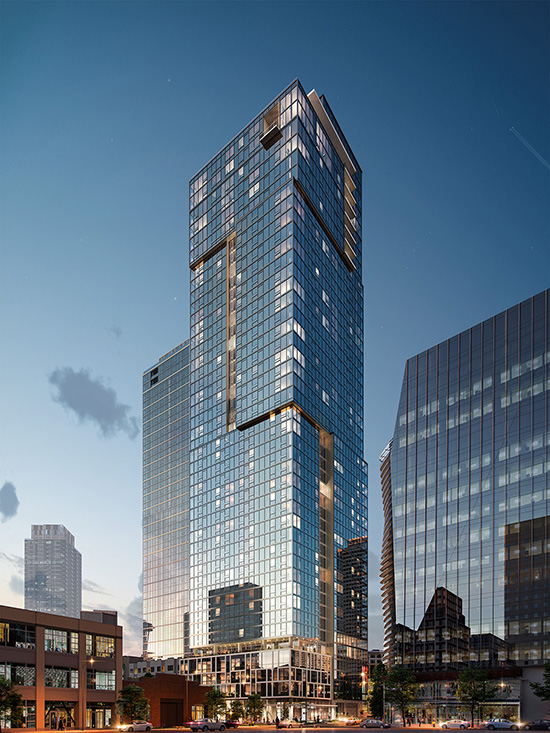|
Subscribe / Renew |
|
|
Contact Us |
|
| ► Subscribe to our Free Weekly Newsletter | |
| home | Welcome, sign in or click here to subscribe. | login |
Architecture & Engineering
| |
 |
October 3, 2019
Survey: Cary Kopczynski & Co.

Specialty: Structural engineering for urban buildings
Management: Cary Kopczynski, senior principal and CEO; Mark Whiteley and Joe Ferzli, senior principals
Founded: 1987
Headquarters: Bellevue
Revenues: N/A
Projects: 1000 Virginia, a residential high-rise in downtown Seattle; and Belltown 36, a 29-story residential tower in Seattle; Plaza 305, a hotel/residential tower in Bellevue
Cary Kopczynski, senior principal and CEO of Cary Kopczynski & Co., answered questions from the DJC about his firm and trends and issues in the industry.
Q: What’s the most unusual project CKC is working on?
A: One of the most unusual is 9th & Howell, a high-rise hotel in Seattle for which we are using a structural steel frame, including a braced steel core.
Most residential and hotel towers are built in reinforced concrete. There are several reasons for this, one them being that flat slab concrete construction provides benefit in minimizing the floor-to-floor height. Concrete slab soffits are textured and used as ceilings, so that the floor-to-floor height is the ceiling height plus the slab thickness.
For the hotel project I’m referring to, which is about 440 feet tall, we’re using a jumbo metal floor deck which allows clear spans of approximately 25 feet between the beams. Further, the room layout modulates such that all beams are located directly over demising walls.
The net effect is that there is no height penalty for the beams and girders.
Q: Which commercial real estate sectors do you see growing or faltering?
A: From our vantage point, the multifamily housing and office sectors are continuing to be strong.
Our work volume in both remains high and we don’t see much indication of a letup. We do hear anecdotal indicators that the growing barriers to urban market entry — taxes, levees, assessments, lengthened permit review time — are deterring new players and disenchanting some veterans. This is true in many markets we work in, but especially in the Bay Area and Los Angeles.
Whether or not these higher barriers translate into a work slowdown remains to be seen. We know that a slowdown will eventually come but our business doesn’t see any indicators of it yet.
Q: What is the most cutting-edge trend in the industry?
A: Modular construction. There is a steady and growing movement in the direction of constructing buildings with more of a Henry Ford mindset.
Too many buildings today are built as “one-off” structures. All of the systems are custom designed and built only once. When the next building comes along, you start all over again. That makes no sense.
The different systems for most buildings have a degree of commonality that can be repeatedly used from one building to the next. This is now being exploited in many ways, the goal being to do more work in a factory under plant-controlled conditions, and less work in the field where productivity is generally lower and the work less efficient.
Q: Should Seattle require property owners to fortify their URM buildings?
A: Upgrading deficient buildings in the interest of public safety makes sense. No thoughtful person would argue against that.
The question becomes who pays. In that regard, I don’t believe that forcing building owners to shoulder the full financial burden would be fair, or for that matter wise. Many, if not most of these buildings were considered code compliant and safe only several decades ago.
If these buildings complied with seismic codes at the time of construction, an argument can be made that upgrading them should qualify for some sort of public assistance or tax relief, since it is the public who will benefit. Mandating that seismic upgrades for these buildings be paid for fully by owners would undoubtedly price some owners out of business, resulting in a scenario where nobody wins.
Q: What are the latest trends for parking structures?
A: The latest trends in parking structure structural engineering involve a heightened industry commitment to broadening the understanding of strategies that have worked for decades. Simplicity in layout. Member sizing and detailing that takes full advantage of high production forming systems for cast-in-place structures, and plant casting technology for precast structures. And, standardization of member sizes and bay spacing.
For most free-standing parking structures, two or at most three column sizes are sufficient — ditto for the beams and girders. On the West Coast, cast-in-place structures remain dominant for seismic reasons, while elsewhere in the country precast and cast-in-place go head to head.
A refreshing trend in the last decade or two has been that far more attention is being paid to aesthetics.
Other Stories:
- Why electric scooters could be a game changer for Seattle
- CLT: construction’s lean, green beauty queen
- The AEC industry has a data problem
- What our evolving mobility options mean for designers and developers
- New OSU-Cascades academic building will aim for net zero
- Mass timber is bringing the warmth of wood to the workplace
- With so many tech advances, why has AEC productivity growth stalled?
- Survey: Weber Thompson
- Survey: Johnston Architects
- Survey: Bohlin Cywinski Jackson
- These 3 Northwest projects show how listening to clients pays off
- Which project delivery methods work best?
- How understanding building codes can help you get more out of your project
- How successful workplaces offer more than just a place to work


